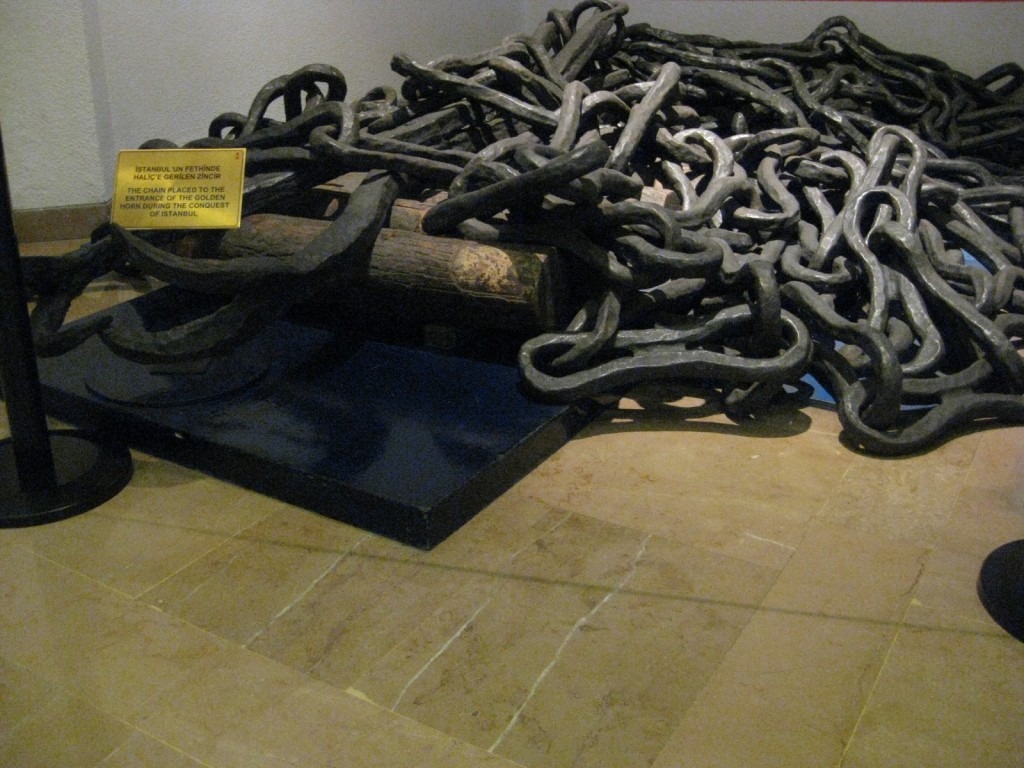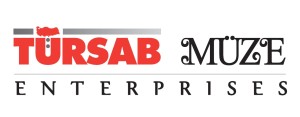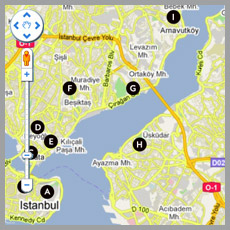Our history, our culture, our values are here The Military Museum and Culture Centre Command, Under the General Staff Military History and Strategic Studies Department tells us about our history, our culture, in short, about us…
The Istanbul Military Museum is one of the world’s leading museums of its kind in terms of the richness and variety of its collections. Its foundations were laid as early as in the 15th century. After the conquest of Istanbul by the Turks in 1453, the Byzantine Hagia Irene Church was used as “Cebehane”, an armoury sheltering precious warfare weapons, tools, and materials. During the reign of Sultan Ahmet III (1703-1730), the armoury collection
was reorganized and put on display in 1726 under the name of “Dar-ül Esliha” (Weapons Quarter).
In 1846, Marshal of the Imperial Arsenal, Ahmed Fethi Paşa, converted the venue into a military antiques museum, thereby creating the first Turkish museum in the modern sense, the “Military Museum” which was shortly after renamed “Müze-i Hümayun” (Imperial Museum).
The Military Museum which remained at the Hagia Irene until 1940 ceased its activities temporarily during the World War II period. Its collections were moved partly to Ankara and partly to Niğde for protection purposes, where they were kept for a number of years until the threat of war was over. Eventually in 1949, all parts of the collection were brought back to Istanbul and gathered at the Maçka Military Quarters where they were tallied and inventoried in a detailed manner. The Maçka military facility having been transferred to the University in 1955, the valuable warfare antiques were then moved to the War College-‘Harbiye’-Gymnasium where they were put on display again from 1959 onwards. After the old War College-Harbiye complex underwent a thorough renovation as from 1966, the building was reopened as the “Military Museum and Culture Centre” on 10 February 1993 with a very successful and contemporary exhibition concept.
A very rich collection
The Military Museum owns a very rich collection consisting of circa 45 thousand pieces including precious objects from the Ottoman era through World War II. However, due to space constraints, the number of pieces on display out of this collection is limited approximately to five thousand. The items classified under diverse groups according to period or category of objects include rifles, pistols, cannons and swords, armours, shields and helmets with refined decorations and inscriptions, copper head armour for horses and great field tents used by sultans on their campaigns.
Military Museum tour guide
Entrance Hall: Here a scale model of ‘Harbiye Military Museum and Cultural Centre building and an introduction showcase including a selection of objects from the museum collection are presented to the public.
Presentation Hall: A documentary chronicle of the history of the Military Museum over a period extending from 1846 to the present day with various photographs and publications is available in this hall.
Shooter Weapons Hall: This hall displays arrows and archery equipment: 17th to 19th century Ottoman Empire bows and arrows, arrow targets, bow and arrow sheaths, bow stretching tools, arrow beds, bow stretching thimbles.
Equitation Hall: This hall contains 19th-20th century cavalry regalia and other horse-riding related paraphernalia.
Fatih and Yavuz Corner: Horse riding model figures of Fatih Sultan Mehmet (the Conqueror: 1451-1481) and Yavuz Sultan Selim I (1512-1520), a panoramic scale model rendition of the moving of Ottoman naval ships overland into the Golden Horn through a road of greased logs built across Galata, during the conquest of Istanbul are displayed in this hall.
Edged Weapons Hall: Oldest samples of edged weapons of European origin consisting of medieval swords, lances and spears alongside 15th century Ottoman curved daggers and lancets are exhibited here.
Defence Weapons Hall: European helmets constitute the largest group of European defence weapons on display in this room.
Atatürk classroom: Mustafa Kemal Atatürk had completed his War College and Academy training at this building during the time when it was a military school. The classroom where military student Mustafa Kemal received his 3rd grade education is dedicated to his memory, with photos and documents related to Atatürk’s school years.
Firearms Hall: Various European and Islamic firearms manufactured between the 16th century and the beginning of the 20th century are exhibited in this hall.
Cannon Models and Small Calibre Cannons Exhibition Hall: 15th to 20th century Ottoman wood and cast metal cannons and other nations’ cannon models are presented here.
Somalia, Bosnia and Kosovo-Internal Security Hall: Flags, uniforms, insignia, medals and photos of recent Turkish peacekeeping units who served in Somalia, Bosnia and Kosovo.
Military Clothing Hall: With the establishment of the Janissary Corps in the Ottoman Empire, a special type of clothing reserved to people serving in the army was adopted. At that initial stage, more importance was attached to headgears rather than the costumes proper. Clothing items of that era are on display in this room.
Flags and Banners Hall: Ottoman and Republican periods’ flags and banners and, flags of other nations are on display in this hall.
Tents Hall: This hall houses Ottoman field and campaign tents and tent equipments from the 17th century onwards.
Martyrs Gallery: This room is devoted to all the martyrs who sacrificed their lives for the cause of independence and contributed to great victories throughout history. The museum also includes the Constitutional Monarchy Hall, the First World War Hall, the Gallipoli War Hall, the War of Independence Hall, the Korea and Cyprus Hall, the Ethnographical Objects Hall, the Chiefs of Staff Hall, General Kenan Evren Hall, the Atatürk Hall, the Mehter-Janissary Band Instruments Hall, the Harbiye Bath, the Sultan Selim III Corner and other sections allocated to Fermans-Imperial Orders and Edicts, Insignia Certificates, Letters Patents and Manuscripts.
Mehter-Janissary Band performances attract interest
Undoubtedly the Janissary Band concerts are among the most interesting activities of the Museum. The multivision documentary chronicling the history of Mehter which is presented in Turkish and English languages daily (except for Mondays and Tuesdays) between 15:00 and 16:00 hours at the modern Atatürk Hall with a capacity of 500 spectators, followed by a musical show performed by the Janissary Band in two sessions of 20 minutes, is a greatly appreciated event by the audience and attracts the keen interest of the museum visitors.
The Military Museum is open to the public daily between 09:00 and 17:00 hours except on Mondays and Tuesdays, the first days of religious holidays and the first day of the New Year.
World Map of Piri Reis is 500 years old
The year 2013 was declared ‘Year of Piri Reis’ by UNESCO to celebrate the five centennial of the World Map of Piri Reis. The world-famous Turkish admiral and cartographer is being commemorated through various events organized around the world.
Piri Muhyiddin Bey by his real name, Piri Reis’s name is written in golden letters in world’s maritime history. There are two reasons for this. Firstly, his first map of the world he drew in 1513. Secondly, the book he wrote in 1521 under the title of Kitab-ı Bahriye (Book of Navigation), where the described the places he saw and the events which took place during his cruises in the Mediterranean. The book which contains detailed information on navigation, as well as accurate charts describing the important ports and cities of the Mediterranean Sea, is considered a major guide book of maritime history, an important source of information for navigators all over the world.
Piri Reis began navigating at young age with his uncle Kemal Reis, a wellknown corsair and seafarer of the time, together with whom he engaged in piracy between the years 1487-1493 in the Mediterranean. He participated in raids against Sicily, Corsica, Sardinia and the shores of France. At that early stage, the Ottoman Empire did not possess an imperial navy. Kemal Reis was a captain engaged in governmentsupported privateering which was a common practice in the Mediterranean Sea among both the Muslim and Christian states of the 15th and 16th centuries. When in 1486 the Moors of Granada, the last Muslim city left in
Andalusia in the course of the Arab retreat, were exposed to massacres and demanded help from the Ottoman Empire, Kemal Reis was sent under Ottoman banner to Spain to save them. Piri Reis participated along his uncle in the evacuation of Muslim refugees from Spain to North Africa. In 1494, he took part for the first time as Ship’s Commander in sea battles
taking place between the Ottoman Empire and Venice within their struggle to establish naval supremacy in the Mediterranean.
When his uncle Kemal Reis died in a marine accident in 1511, Piri settled in Gelibolu (Gallipoli), where he started working on his studies on navigation. Although he took part in certain campaigns with the fleet under the commandment of the Barbarossa Brothers,
he subsequently devoted most of his time to mapmaking and writing his book “Kitab-i Bahriye” in Gelibolu. He drew in 1513 his first map of the world on the basis of his own observations and making use of existing older charts. His world map is the oldest known Turkish atlas showing the New World, and one of the oldest maps of America still in existence anywhere. The surviving fragment of this map is encompassing the Atlantic Ocean, the Iberian Peninsula, Africa’s west and the eastern shores of America, the ‘New World’. What makes out the universal importance of this 1513 map is the fact that, as written by Piri Reis in the account of his sources of this map, “these lands and islands were drawn from the map of Columbus.” Again in his Kitab-ı Bahriye where he is describing the discovery of the Antilles, Piri Reis writes, “I came into possession of this map…” Columbus made four voyages
to America between 1492 and 1504, yet none of the maps he drew of the western coast of the Atlantic survived. Moreover, of all the maps drawn over the period following the discovery of America by Columbus, the most accurate is that of Piri Reis. Neither the world
map drawn in 1500 by Juan de la Cosa, who accompanied Columbus as a guide on his second voyage, nor those drawn by Contarini in 1506 and Martin Waldseemuller in 1507 (the latter being the first to show North and South America as a separate continent from Asia)
correspond so closely to modern maps as that of Piri Reis.
Apart from the maps, the book Kitab-ı Bahriye he wrote in 1521, also contained detailed information on the major ports, bays, gulfs, capes, peninsulas, islands, straits and ideal shelters of the Mediterranean Sea, as well as techniques of navigation and navigation-related information on astronomy, together with information about the local people of each country and city and the curious aspects of their culture. A great cartographer as much as a skilled admiral, Piri Reis, who left a unique and memorable legacy continues to be remembered and still show the way today to navigators.
This article has originally appeared in “Müze” Magazine, published quarterly with the contributions of the Ministry of Culture and Tourism. We would like to thank TÜRSAB Museum Enterprises for sharing this piece with Istanbul Digital Platform followers.




















